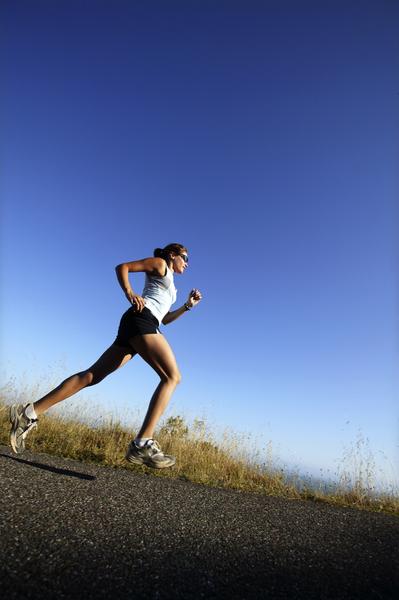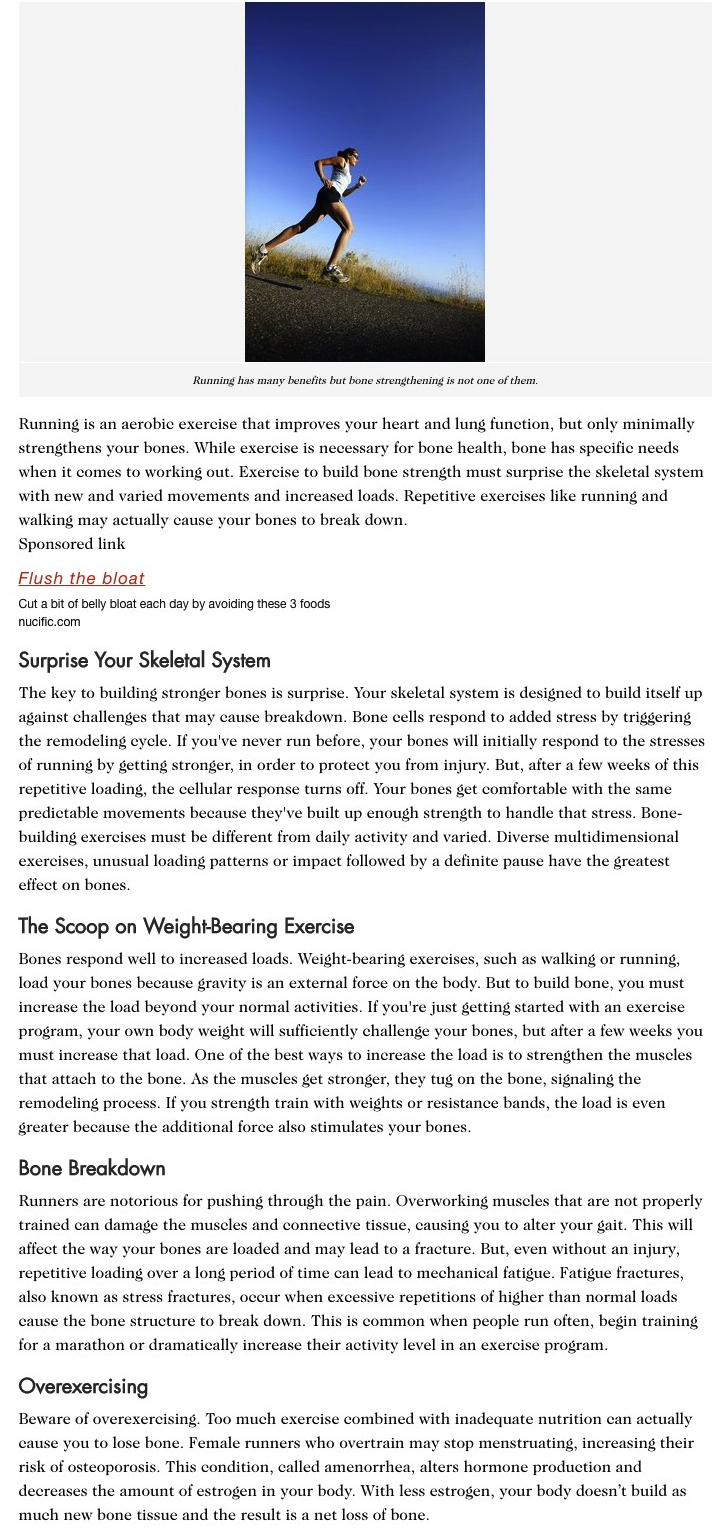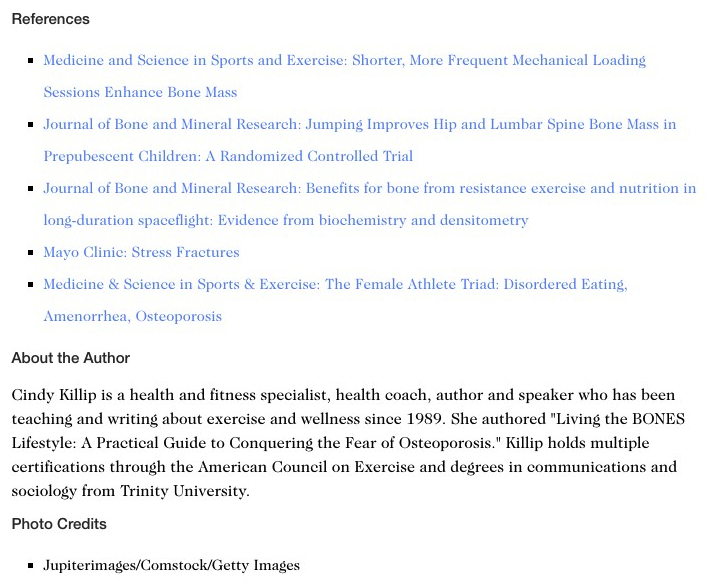
Published in Woman: The Nest, April 2013
Running is an aerobic exercise that improves your heart and lung function, but only minimally strengthens your bones. While exercise is necessary for bone health, bone has specific needs when it comes to working out. Exercise to build bone strength must surprise the skeletal system with new and varied movements and increased loads. Repetitive exercises like running and walking may actually cause your bones to break down.
Surprise Your Skeletal System
The key to building stronger bones is surprise. Your skeletal system is designed to build itself up against challenges that may cause breakdown. Bone cells respond to added stress by triggering the remodeling cycle. If you’ve never run before, your bones will initially respond to the stresses of running by getting stronger, in order to protect you from injury. But, after a few weeks of this repetitive loading, the cellular response turns off. Your bones get comfortable with the same predictable movements because they’ve built up enough strength to handle that stress. Bone-building exercises must be different from daily activity and varied. Diverse multidimensional exercises, unusual loading patterns or impact followed by a definite pause have the greatest effect on bones.
The Scoop On Weight-Bearing Exercise
Bones respond well to increased loads. Weight-bearing exercises, such as walking or running, load your bones because gravity is an external force on the body. But to build bone, you must increase the load beyond your normal activities. If you’re just getting started with an exercise program, your own body weight will sufficiently challenge your bones, but after a few weeks you must increase that load. One of the best ways to increase the load is to strengthen the muscles that attach to the bone. As the muscles get stronger, they tug on the bone, signaling the remodeling process. If you strength train with weights or resistance bands, the load is even greater because the additional force also stimulates your bones.
Bone Breakdown
Runners are notorious for pushing through the pain. Overworking muscles that are not properly trained can damage the muscles and connective tissue, causing you to alter your gait. This will affect the way your bones are loaded and may lead to a fracture. But, even without an injury, repetitive loading over a long period of time can lead to mechanical fatigue. Fatigue fractures, also known as stress fractures, occur when excessive repetitions of higher than normal loads cause the bone structure to break down. This is common when people run often, begin training for a marathon or dramatically increase their activity level in an exercise program.
Overexercising
Beware of overexercising. Too much exercise combined with inadequate nutrition can actually cause you to lose bone. Female runners who overtrain may stop menstruating, increasing their risk of osteoporosis. This condition, called amenorrhea, alters hormone production and decreases the amount of estrogen in your body. With less estrogen, your body doesn’t build as much new bone tissue and the result is a net loss of bone.
References
- Medicine and Science in Sports and Exercise: Shorter, More Frequent Mechanical Loading Sessions Enhance Bone Mass
- Mayo Clinic: Stress Fractures
- Medicine & Science in Sports & Exercise: The Female Athlete Triad: Disordered Eating, Amenorrhea, Osteoporosis
Author Bio
Cindy Killip is a medical exercise specialist, health coach, author and speaker who has been teaching and writing about exercise and wellness since 1989. She authored the book Living the BONES Lifestyle: A Practical Guide to Conquering the Fear of Osteoporosis [2012]. Killip holds multiple certifications through the American Council on Exercise and degrees in communications and sociology from Trinity University with a focus on pre-med and exercise science/lifetime fitness. She attended graduate school studying exercise physiology at the University of New Mexico.
Article published on Woman: The Nest, April 2013 at https://woman.thenest.com/can-running-negative-impact-bones-16924.html







